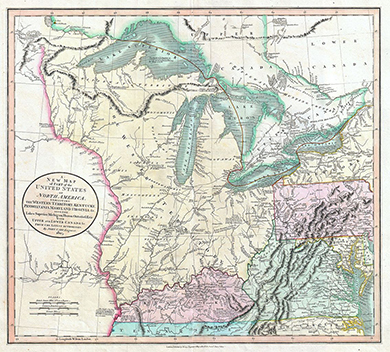| << Chapter < Page | Chapter >> Page > |
By the 1840s, the United States economy bore little resemblance to the import-and-export economy of colonial days. It was now a market economy, one in which the production of goods, and their prices, were unregulated by the government. Commercial centers, to which job seekers flocked, mushroomed. New York City’s population skyrocketed. In 1790, it was 33,000; by 1820, it had reached 200,000; and by 1825, it had swelled to 270,000. New opportunities for wealth appeared to be available to anyone.
However, the expansion of the American economy made it prone to the boom-and-bust cycle. Market economies involve fluctuating prices for labor, raw materials, and consumer goods and depend on credit and financial instruments—any one of which can be the source of an imbalance and an economic downturn in which businesses and farmers default, wage workers lose their employment, and investors lose their assets. This happened for the first time in the United States in 1819, when waves of enthusiastic speculation (expectations of rapidly rising prices) in land and commodities gave way to drops in prices.
In the early nineteenth century, people poured into the territories west of the long-settled eastern seaboard. Among them were speculators seeking to buy cheap parcels from the federal government in anticipation of a rise in prices. The Ohio Country in the Northwest Territory appeared to offer the best prospects for many in the East, especially New Englanders. The result was “Ohio fever,” as thousands traveled there to reap the benefits of settling in this newly available territory ( [link] ).

The federal government oversaw the orderly transfer of public land to citizens at public auctions. The Land Law of 1796 applied to the territory of Ohio after it had been wrested from Indians. Under this law, the United States would sell a minimum parcel of 640 acres for $2 an acre. The Land Law of 1800 further encouraged land sales in the Northwest Territory by reducing the minimum parcel size by half and enabling sales on credit, with the goal of stimulating settlement by ordinary farmers. The government created land offices to handle these sales and established them in the West within easy reach of prospective landowners. They could thus purchase land directly from the government, at the price the government had set. Buyers were given low interest rates, with payments that could be spread over four years. Surveyors marked off the parcels in straight lines, creating a landscape of checkerboard squares.
The future looked bright for those who turned their gaze on the land in the West. Surveying, settling, and farming, turning the wilderness into a profitable commodity, gave purchasers a sense of progress. A uniquely American story of settling the land developed: hardy individuals wielding an axe cleared it, built a log cabin, and turned the frontier into a farm that paved the way for mills and towns ( [link] ).

Notification Switch
Would you like to follow the 'U.s. history' conversation and receive update notifications?